Best Old House Neighborhoods 2011: Fixer-Uppers
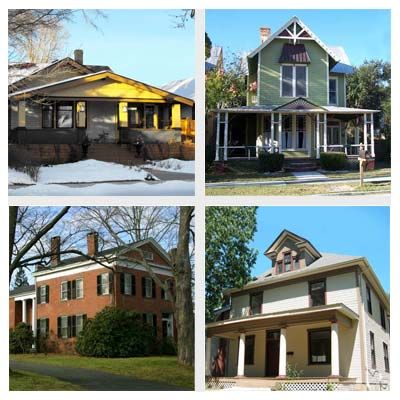
For the fourth year in a row, we’ve tracked down North America’s most timeless neighborhoods—places where lovingly crafted old houses have extraordinary pasts and unarguably promising futures. With help from our friends at Portland, Oregon-based PreservationDirectory.com—who distributed our nomination forms to more than 14,000 historical societies, neighborhood groups, and preservation nonprofits—we’ve assembled our biggest-ever list of off-the-beaten-path places that are worth eyeing for a great old home.
Here are our favorite places where the homes are beautiful, but just in need of a little TLC.
Historic Garden District, Montgomery, Alabama
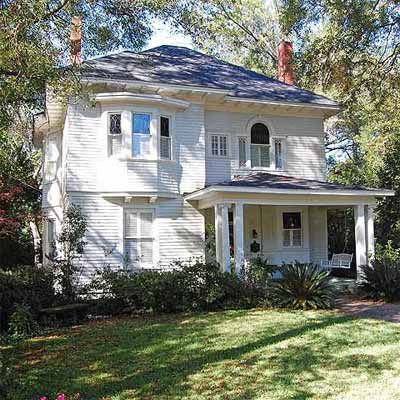
Twelve short blocks from downtown Montgomery, the Garden District is home to 2,500 residents as diverse as its architecture. Young singles and 30-something professionals are drawn to a community that is ethnically varied, socially diverse, and still every bit as genteel as any small town in the old South. Described as a neighborhood “where civility never went away,” by local Sandra Nickel, a resident since 1980, the Historic Garden District’s sidewalked streets are lined with the charming domiciles of neighbors who greet each other on weekday mornings and head home from work to eat lunch. On weekends, gardening has long remained a passion among local homeowners, and brightly colored vegetables and flora are the pride of the area’s oversized lots.
The Houses
Once home to many of Montgomery’s early business leaders, the Garden District is a trove of Greek Revivals, Colonial Revivals, and Craftsman-style bungalows in every imaginable condition. At the neighborhood’s humble north end, near two interstates and a commercial area, a cottage or bungalow in the full-on fixer-upper category (requiring a roof replacement and gut renovation) might go for as little as $25,000, while a fully restored small home is likely to be priced in the $125,000 to $175,000 range. Houses get larger and pricier—and have generally benefited more from Montgomery’s renewal—toward the district’s mansion-lined south end, where grand residences sell for upwards of $300,000, depending on size and location.
Why Buy Here?
Montgomery has for the most part escaped the country’s employment woes, thanks in part to a Hyundai manufacturing plant that opened here in 2005 and employs 2,700 people. The company’s success brought several car-parts suppliers to the region, and thousands more jobs. With all those happily working people, it’s no wonder the Garden District is experiencing a revival.
Among the best for: The South, Bargains, Fixer-Uppers, Cottages & Bungalows, Singles, First-Time Buyers, Gardening, Walkability
Ghost Historic District, Denver, Colorado
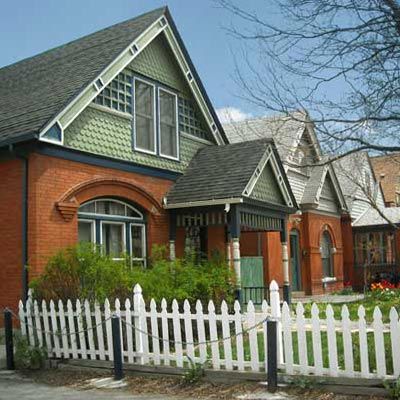
The Ghost Historic District pairs urban energy with small-town charm. It’s the newest area here to be recognized for its notable past—in 2010, it became Denver’s 50th historic neighborhood—but history isn’t what makes residents, a mix of young couples, families, and old-timers, feel at home. The shops, restaurants, and galleries lining 32nd Avenue, a main drag bordering the neighborhood to the north, make the area a pedestrian destination. Lower Downtown, known as LoDo, is a short bike or bus ride away, so those who work in the city’s business and cultural center have an easy commute. Nearby foothills offer convenient access to hiking and biking trails. A communal spirit pervades this area of some 200 homes in northwest Denver. Resident Marilyn Quinn found that out when her neighbors held a potluck party during a blizzard shortly after she moved in. “There are darn good cooks here,” she says.
The Houses
Most houses were built between the 1880s and 1920s. Old-house enthusiasts will find a variety of architectural styles, including Queen Anne, Dutch Colonial Revival, Tudor, Craftsman bungalows, Norman Cottages, and Foursquares. While prices average around $325,000, a 1,200-square-foot, two-bedroom, 1901 Victorian sold recently for $245,000.
Why Buy Here?
The Ghost Historic District has seen revitalization for more than a decade but buys remain. As part of Denver’s only ZIP code that hasn’t seen a market dip since 2007, this is the rare slice of city where a buyer can find a deal without fear of the bottom dropping out.
Among the best for: The Southwest, Bargains, Fixer-Uppers, Waterfront, Family Friendly, Cottages & Bungalows, Singles, First-Time Buyers, Victorians, Easy Commute
Tariffville Village, Simsbury, Connecticut
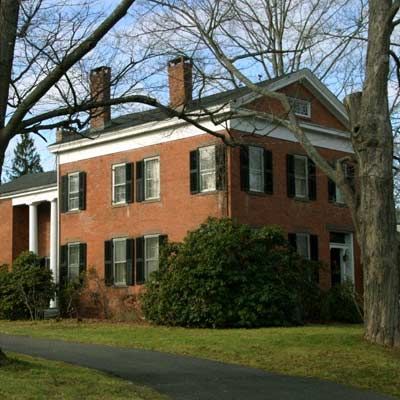
In Tariffville, locals are known to hold old-fashioned community cookouts or head to the Farmington River for tubing, kayaking, or rafting. But despite its many pleasures, few people outside Connecticut have ever heard of it. “This place has sort of been forgotten over the years,” says Chet Matczak, president of the Tariffville Village Association. “That’s one of the things that make it such a nice place to live.” The neighborhood of just 320 families is a pocket of Simsbury, about 11 miles northwest of Hartford. Thanks to its small-town New England charms, top-notch schools, and die-hard dedication to historic preservation. Simbsury was included on the National Trust for Historic Preservation’s exclusive “Dozen Distinctive Destinations” list in 2010. And Money magazine recently named it one of the Best Places to Live in America. We thought we’d add to the list by naming Tariffville one of the best neighborhoods to buy an old house, too.
The Houses
Greek Revivals and Gothic Revivals in Tariffville date back to the 19th century, while the late 1800s and early 1900s produced a whimsical array of Folk Victorians. Prices range from $180,000 for four-bedroom homes in disrepair (but with plenty of motivating character) to about $400,000 for large houses in beautiful condition.
Why Buy Here?
Tariffville is one of the few places where you can find a five-bedroom home for under $200,000. It’s an affordable hamlet for old-home lovers who want bang for their buck and for families buying for the first time and looking for access to quality education.
Among the best for: The Northeast, Bargains, Fixer-Uppers, Waterfront, Family Friendly, First-Time Buyers, Victorians, Small Towns, Outdoor Activities, Easy Commute
South Historic District, Palatka, Florida
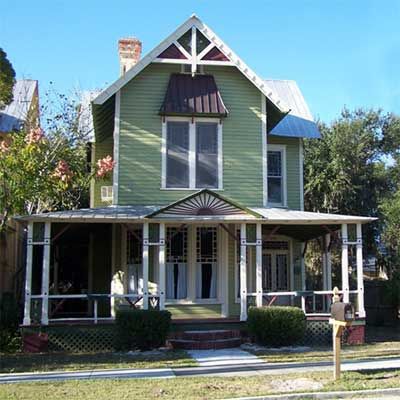
Once known as the “Gem of the St. Johns River,” this north-state city of 11,000 people was Florida’s original tourist destination. After a devastating fire in 1884, the farm town was swiftly rebuilt into a travelers’ hot spot, with eight first-class resorts, including the still existing James Hotel. Among the personalities who kicked back here: Jimmy Stewart, Gary Cooper, Babe Ruth, Teddy Roosevelt, Thomas Edison, and Harriet Beecher Stowe. The city still thrives today, with many young families, students at the Florida School for the Arts and St. Johns River State College, and, of course, retirees drawn by the welcoming weather (and a municipal golf course designed in 1925 by links lord Donald Ross). “It’s very Southern,” says Roberta Correa, president of the Palatka Southside Historic Neighborhood Association. “People are friendly, and the homes are quaint.”
The Houses
Palatka’s most desired houses line the gaslit streets of the South Historic District. Formerly known as “The Hammock,” this neighborhood below the downtown business district has long been one of Palatka’s most affluent. House styles include Colonial Revival, Greek Revival, Stick, Queen Anne, Folk Victorian, and Craftsman bungalows (including several Sears kit homes). A large, fully restored house with a river view can command $500,000. Smaller options needing TLC can go for as little as $60,000.
Why Buy Here?
The Southside Historic Neighborhood Association has a program that grants eligible homeowners up to $20,000 toward exterior restorations within the Historic District. The town’s Main Street revitalization campaign offers grants to new and existing businesses, meaning new jobs and amenities for residents and a boost to the real estate market.
Among the best for: The South, Bargains, Fixer-Uppers, College Towns, Waterfront, Retirees, Cottages & Bungalows, Victorians
Normal Hill, Lewiston, Idaho
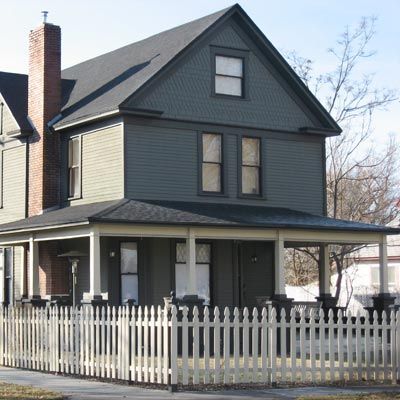
From the front porches of noble Victorian-era houses in Lewiston’s Normal Hill neighborhood, one can see cargo ships resting at the confluence of the Snake and Clearwater rivers, packed with Idaho wheat and ready to embark on export journeys to the Pacific Rim. Located in the Lewis Clark Valley, this city of about 33,000 has the distinction of being the West’s most inland seaport, some 465 miles from the coast. One of its most established—and beloved—old neighborhoods is Normal Hill, which got its name from Lewiston State Normal School, a 19th-century teacher’s college, and is now home to Lewis-Clark State College. LCSC offers the families and students who live here entertainment options from theatrical performances to basketball games. Locals can also easily walk down Fifth Avenue to the many bars, restaurants, and bakeries in downtown Lewiston.
The Houses
Homes here range from late-19th-century Queen Annes with river views to smaller Craftsman-style bungalows and Tudor Revival cottages, many of which have ample yards for gardening. We found a stunning 1,614-square-foot 1928 Craftsman with all its original built-in cabinetry—and a cool 1940s retro kitchen—for $120,000. Prices for river-view houses range from $130,000 up to $300,000, depending on size.
Why Buy Here?
Lewiston is part of the nation’s “banana belt,” meaning it has mild winters and hot summers. While we think it’s one of the best places in the country to find an old house, Outdoor Life magazine recently named it the Number 1 town in America for sportsmen, due to the amazing fishing and hunting opportunities offered by nearby Hells Canyon.
Among the best for: The West & Northwest, Bargains, Fixer-Uppers, Waterfront, Cottages & Bungalows, Singles, First-Time Buyers, Victorians, Gardening, Walkability
Elkader, Iowa
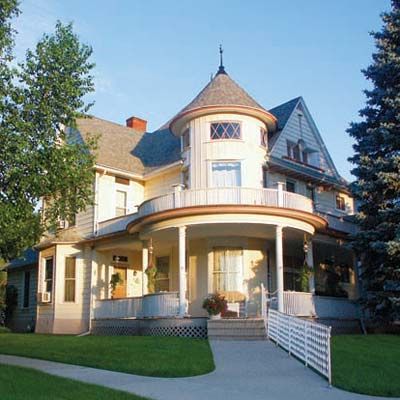
“We are the only town in America named after a Muslim revolutionary,” says Mary Harstad. Founded in 1846, the place is indeed named for Abd al-Qadir, the so-called Father of Algeria, who fought the French occupation, beginning in the 1830s. His bravery so inspired the founders of the town that they named it after him—with an Americanized spelling. Mary and her husband, Donald Harstad, a successful crime novelist, left their hometown for Los Angeles for several years but realized their mistake and moved back. She walks to work at the Chamber of Commerce, located in the basement of a still-operating 1903 opera house. Elkader’s revitalized downtown also features a first-run movie theater and Schera’s, a popular Algerian-American restaurant.
The Houses
Many were based on pattern book design by turn-of-the-century architect George Franklin Barber, who helped make the Queen Anne style ubiquitous nationwide in the late 1800s. The houses feature elaborate wraparound porches, second-story balconies, flamboyant spindle-work, and, in many cases, front-yard gardens. You’ll find brick Greek Revivals, smaller Folk Victorians, and bungalows, too. Prices range from $60,000 for a handyman’s special to $300,000 for a restored Painted Lady.
Why Buy Here?
Elkader, a settlement of just under 1,500, seemingly has no cons: The streets are safe for kids to walk or to ride their bikes, and adults blow off steam fishing or kayaking on the Turkey River. Cedar Rapids, an hour away, can help fill in what is often a small-town blank: gainful employment.
Among the best for: The Midwest, Bargains, Fixer-Uppers, Family Friendly, Singles, First-Time Buyers, Victorians, Small Towns, Gardening, Outdoor Activities, History Happened Here
Atchison, Kansas
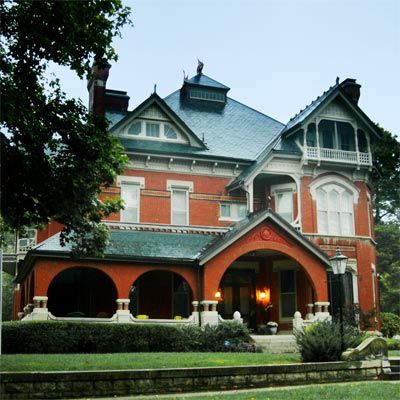
This northeast Kansas city (population 11,000) on scenic, rolling hilltops along the Missouri River retains its longtime downtown businesses, including prosperous locally owned hardware stores, bakeries, and mom-and-pop drug stores. The reason behind this refreshing scenario? Jobs—yes, real middle-class jobs! The area’s largest employers include a textile manufacturer, a hardware distributor, and Benedictine College, a Catholic liberal arts university of about 1,600 students that helps keep the city young and bustling. Tourism is a minor industry. There’s a haunted-house-tour trade based on a community of charismatic ghosts said to live in town. And Atchison is the birthplace of Amelia Earhart. The aviatrix’s family home houses a museum named for her, and a well-attended July festival celebrates her life and sky-pioneering accomplishments.
The Houses
Victorian-era houses, such as Queen Annes and Italianates, are par for the course, as are Colonial Revivals and bungalows. Many are situated along or near the Missouri River, and a handful are listed on the National Register of Historic Places. But it’s the property prices that will really lure old-house enthusiasts. A completely restored five-bedroom, 1900 Colonial Revival recently came on the market for $185,000. The house, located on a brick street, retains all its original—and, yes, exquisite—oak millwork.
Why Buy Here?
Got the restoration bug and a good eye? “We have an unusual market in Atchison,” says Realtor Scott Noyes. “You’ll often find a run-down $20,000 Victorian fixer-upper right down the street from a restored one that costs $200,000.” The city also has great public schools and safe streets, and is a 45-minute drive to Kansas City and Topeka.
Among the best for: The Midwest, Bargains, Fixer-Uppers, Waterfront, College Towns, Victorians, History Happened Here
Holy Cross, New Orleans, Louisiana
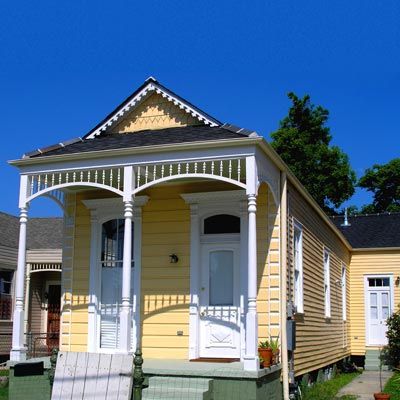
After being inundated by more than 10 feet of water from Hurricane Katrina, this historic working-class New Orleans neighborhood on the Mississippi River seemed about as likely to resurface as Atlantis. But soon after the water receded, a group of dedicated architects, residents, preservationists—and some guy named Norm Abram—ran to Holy Cross’s rescue, restoring the old shotgun houses and Creole Cottages and constructing sustainable housing. Norm and This Old House TV brought a flood-damaged 1892 shotgun back to life here in 2007. Now this old NOLA section, built on a former sugar-plantation site, is seeing new life, as families, artists, and, of course, jazz musicians, stake their claim on its increasingly bright future.
The Houses
These houses were built to last, with thick wood walls salvaged from old river barges, heavy hurricane shutters, and sturdy cypress woodwork. The area is dominated by 19th-century Creole Cottages and 19th- and early-20th-century single or double shotgun houses, some of which have second stories, called camelbacks, built on the rear. A gutted shotgun can be grabbed for as little as $19,000; restored, they tend to sell for $89,000 to $180,000, depending on size and location.
Why Buy Here?
Just over half of Holy Cross’s pre-Katrina population has returned, and the area is included in a program called Operation Comeback, run by the Preservation Resource Center of New Orleans. The organization has employed a revolving fund to restore dozens of houses here, selling them to first-time and repeat buyers. Talk of a new streetcar line and a new grocery store bode well for Holy Cross’s continuing comeback.
Among the best for: The South, Bargains, Fixer-Uppers, Waterfront, Singles, Gardening
Heritage Hill, Grand Rapids, Michigan
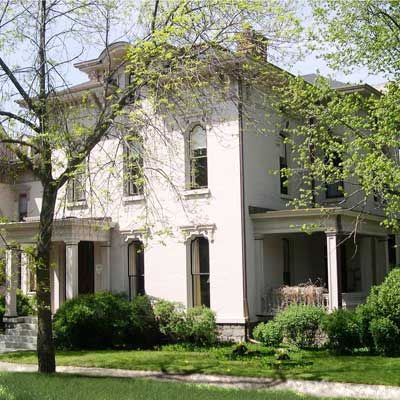
This neighborhood is a mecca for people who love historic American architecture. Not only are the homes storied, the fact that they stand is significant to preservation societies across the U.S. Urban-renewal plans for Grand Rapids during the 1960s had doomed this treasure trove of old houses, but the community fought to protect them. In winning the landmark case, members of the Heritage Hill Association set a precedent: Federal planning agencies are now required to consider their projects’ effects on historic properties.
Surrounded by five urban colleges (including Grand Valley State and Kendall College of Art and Design), Heritage Hill is a cultural center, flourishing with artists, philanthropists, and restaurants. Manicured gardens are celebrated here, especially in May, when a public tour offers owners a chance to show off their homes and horticultural skills. Heritage Hill is diverse, with college students, singles, couples, and families from all backgrounds.
The Houses
The 1,300 homes here include some dating back to as early as 1844, and a remarkable array of styles is represented. You’ll see everything from Italianate and Chateauesque houses to later Tudor Revivals; there’s also a wealth of Greek and Colonial Revivals, Queen Annes, and even a Frank Lloyd Wright Prairie-style home. TLC-craving mansions may sell for around $200,000, but if you seek something more turnkey, you could find a loved three-bedroom 1886 Folk Victorian with Eastlake details for around $170,000.
Why Buy Here?
Though short sales and foreclosures haven’t hit Grand Rapids (long the center of the office-furniture industry) as they have Detroit and other automotive cities, the down market hasn’t overlooked Heritage Hill. Today, you can grab the former castle of a lumber baron or wealthy judge—and walk from home to work in the city’s center—for what amounts to pocket change in other places.
Among the best for: The Midwest, Bargains, Fixer-Uppers, College Towns, Retirees, Singles, City Living, Victorians, Gardening, Easy Commute, Walkability
Best for Bargains (cont’d)
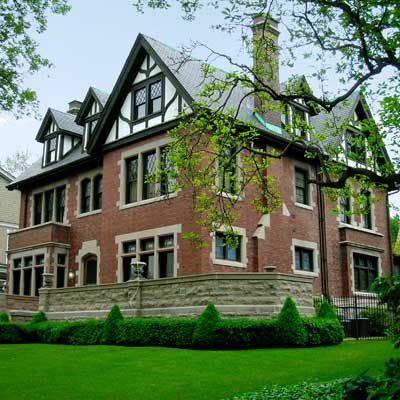
Compton Heights, St. Louis, Missouri
The Houses
They were built by the city’s most affluent beer barons and businessmen—”John Francis Queeny, the guy who started Monsanto, once lived right next door,” says Gregory. These wealthy families sought out the finest architects, who took opulent styles—such as Beaux Arts and Richardsonian Romanesque—to new, more flamboyant heights. Prices start at around $190,000 for a large house in need of a gut renovation. While many single-family homes have been restored, others, owned by longtime residents, hit the market as excellent shining-up opportunities, frequently retaining their original details. Rehabbers will also be happy to know that deed restrictions have long prohibited conversions into harder-to-renovate rental units.
Silver City, New Mexico
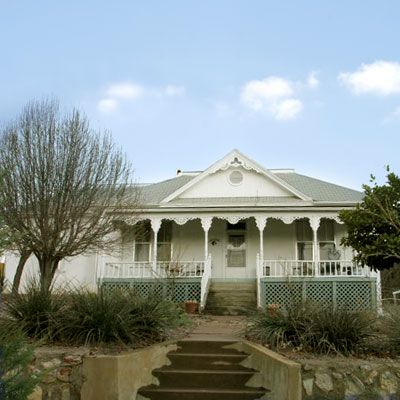
Retired professors and young academics alike flock to this former metal-mining boomtown nestled in the foothills of the Pinos Altos Mountains. Part of the draw may be its Old West roots—a former Apache campsite, Billy the Kid is said to have spent his formative years here in the state’s southwestern corner. But today, as home to Western New Mexico University and a burgeoning arts scene, and bordering 3.3 million acres of untamed national forest, this community of about 10,000 is a contender for anyone seeking low-key living. “It’s a laid-back lifestyle—people go hiking, biking, birding,” says real estate agent Colleen Stinar. “It’s like Santa Fe, without the pretentiousness.” Looking to explore the local terrain? Nature lovers will find an active Audubon chapter and native plant society, while townies inclined to cultural events enjoy art gallery walks, blues and jazz concerts, and experimental theater performances.
The Houses
Clustered around the University and in the city’s other five historic districts is an eclectic mix of brick Queen Anne cottages, other Victorian-era homes, Territorial adobes, and bungalows with southwestern flair (some with adobe construction). Prices range from $120,000 to $250,000, depending on size and condition. We recently spotted a restored smaller bungalow—a good fit for a first-time buyer or young family—for $85,500.
Why Buy Here?
New Mexico’s property taxes are among the lowest in the country, and Silver City’s housing market is affordable compared with other residential oases in this state. Dollars also go far here in terms of the quality of life—the cost of living is somewhat lower than the national average.
Among the best for: The Southwest, Fixer-Uppers, College Towns, Retirees, Family Friendly, First-Time Buyers, Victorians, Outdoor Activities
Montford Historic District, Asheville, North Carolina
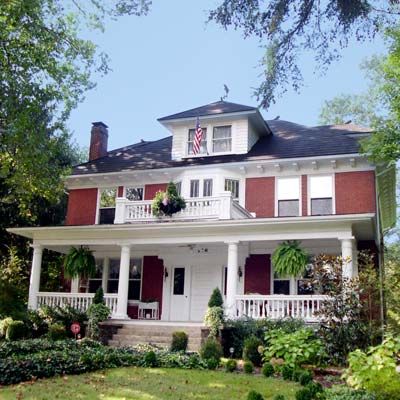
Founded in 1893, Asheville’s Montford neighborhood has since provided generously to 20th-century American literary lore. Thomas Wolfe was laid to rest here in Riverside Cemetery, but not before compiling his experiences in a 1929 autobiographical novel, Look Homeward, Angel. William Sydney Porter, better known as O. Henry, is also buried here. And, in 1948, Zelda Fitzgerald met her end in a tragic fire at an area mental hospital. Montford, still an arts-focused community, is home today to writers, artists, and musicians (along with students, professionals, and retirees). Residents showcase their talents at May’s annual music and arts festival, and celebrate summer among fireflies at Shakespeare productions staged at a local amphitheater. Heavily wooded, this western North Carolina neighborhood also has a mountain-town feel and access to Class II–V rapids, and the sports that go with them, on a number of nearby rivers, all within an hour’s drive.
The Houses
Most houses in the Montford Historic District date between 1890 and 1925, and styles are eclectic. You’ll find Queen Anne, Colonial Revival, Georgian Revival, Neoclassical, Shingle, and vernacular houses in a wide price range. You can find a modest bungalow needing work for around $100,000, or a grand old mansion fit for a family—or a bed-and-breakfast—for upwards of $1 million.
Why Buy Here?
With an impressive range of home prices, sizes, and styles, this neighborhood has something for everyone. And there’s plenty on the market now, including a three-bedroom 1910 Shingle Style house with original architectural features offered for less than $300,000. All it needs is a little love.
Among the best for: The South, Bargains, College Towns, Retirees, Family Friendly, Outdoor Activities, History Happened Here
South Fountain Historic District, Springfield, Ohio
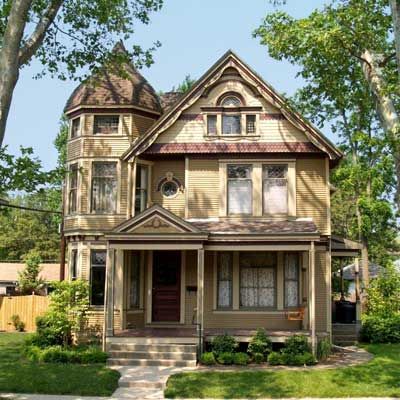
“So, what’s keeping us from coming home?” Stephen Chirico asked his wife, Anne, as they drove the backroads of Springfield, Ohio, about five years ago. After living in suburban Atlanta for 17 years, their visit to this charm-filled city of around 63,000 for Stephen’s high-school reunion reminded them of all the things they loved about it: the college-town vibe provided by Wittenberg University, the strong sense of community its front-porch-lined neighborhoods provided, the better-than-you’d-think art museum, and the ubiquitous Victorian-era houses. Not long after, the Chiricos purchased an enormous 1925 Prairie Box home in the South Fountain neighborhood, a National Historic District adjacent to the revitalized downtown, where tons of Queen Annes, Italianates, Stick and Shingle Style, and Second Empire homes were built long ago for Springfield’s wealthy industrialists and higher-income families. While their new place needed a gut renovation, the Chiricos were won over by its original hardwood floors, oak millwork, and French doors. The fact that the place cost only $40,000—did we mention this place is great for bargains?—sealed the deal.
The Houses
Most were built by wealthy industrialists or their more modest-incomed employees, who either ran or worked at the farm equipment and automotive companies that once thrived here. Victorian-era homes are the mainstay, though there are also a few later Prairie-style houses. Every home in the district has a front porch, a feature that’s celebrated the first Saturday of each October during South Fountain’s Front Porch Festival. Prices range from $15,000 for a fixer-upper Folk Victorian, to $80,000 for a restored Queen Anne.
Why Buy Here?
Houses, once carved up into apartments, are being bought up for peanuts and restored by young professionals, many of them engineers or academics who work at either Wittenberg or nearby Wright State University. Some commute to Dayton, which is about 25 miles away, or make the longer drive to Columbus, about an hour’s drive from here. Once industrial, Springfield is now a thriving college town and an affordable place to raise kids in an idyllic, village-style environment.
Among the best for: The Midwest, Fixer-Uppers, College Towns, Family Friendly, Victorians
East Nashville, Nashville, Tennessee
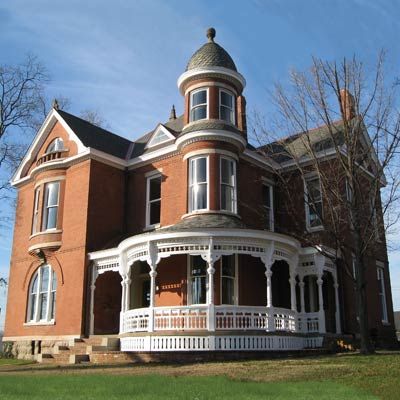
Like any great urban neighborhood, East Nashville is home to writers and waiters, schoolteachers and sculptors, accountants and artists, feminists and families. “It’s definitely a cool place, and we have a real mix of folks who choose to live here,” says local activist Carol Norton, who moved to this “neighborhood” of about 25,000 people back in the ’70s. In the decades she’s spent here, Norton has seen East Nashville survive recessions, some seriously bad urban-renewal projects, and a 1998 tornado that nearly eighty-sixed the area. These days she gets a kick out of what a new, younger generation is bringing to the neighborhood—from the tomato-themed festival put on by a team of local artists and musicians each summer to all of the new coffee shops, ice-cream parlors and music venues that seem to open up here on a weekly basis. In fact, part of East Nashville’s charm can be chalked up to the fact that almost all of its businesses are of the local neighborhood-folks variety. “No Applebee’s here,” says Norton.
The Houses
“I think of East Nashville as an architectural picture book,” Norton says. Indeed, you can find here both modest and majestic examples of Foursquares, Queen Annes, Tudor Revivals, and Craftsman-style bungalows. There are plenty of houses currently on the market in the $100,000 to $200,000 range.
Why Buy Here?
Aside from the affordable housing, East Nashville also provides easy access to Music City, just across the Cumberland River. But the main reason to look here is the sense of community—one seldom seen in cities or suburbs—and the creative energy and camaraderie sustained by its residents and small business owners. It’s what Norton describes as “Mayberry—with a twist.” From young bohemians to growing families to local old-timers, this is a place where everyone belongs and can find opportunity to prosper.
Among the best for: The South, Bargains, Fixer-Uppers, Cottages & Bungalows, City Living, First-Time Buyers, Victorians, Easy Commute
University District, Salt Lake City, Utah
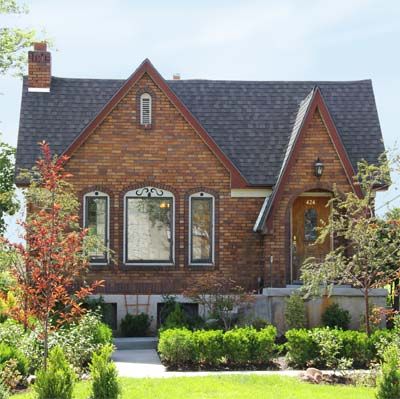
Young families live alongside professors and college students in this Salt Lake City neighborhood between downtown and the University of Utah campus. Think of the University District as a perfect college town, where residential streets divided by grassy medians are within walking distance of locally owned pizza parlors and coffee shops; and where a sea of residents, donning their finest red and white, migrate to nearby Rice-Eccles stadium on autumnal Saturdays to watch their beloved Utes play football. “People love this neighborhood,” says Realtor Celeste Council, whose clients are drawn to its progressive vibe and the close-set houses, which she says adds to the University District’s sense of community. The neighborhood had a scare in the 1970s when developers started knocking down historic houses to make way for apartments and commercial buildings. But residents fought back, secured new zoning laws, and got a large chunk of the neighborhood listed on the National Register of Historic Places.
The Houses
Most are brick or clapboard Folk Victorians built for University of Utah professors and employees between 1900 and 1920. Other styles include Gothic Revival, Queen Anne, Tudor, and Craftsman. You can get a modest two-bedroom Folk Victorian for less than $200,000, though larger homes are priced $500,000 and up.
Why Buy Here?
Preservation-minded buyers are purchasing and renovating an increasing number of the old houses here, ensuring that this historic neighborhood retains its classic architecture and character. Many smaller, low-carbon-footprint houses are also bringing eco-savvy buyers, who install solar panels, swap thirsty lawns for xeriscaping, and use rain barrels to collect water for gardens. University District residents are also eschewing cars, relying on bicycles and Salt Lake City’s light-rail system to get to and from downtown.
Among the best for: The West & Northwest, Fixer-Uppers, College Towns, Family Friendly, Cottages & Bungalows, City Living, Singles, Gardening, Easy Commute, Walkability
Mountain View, Roanoke, Virginia
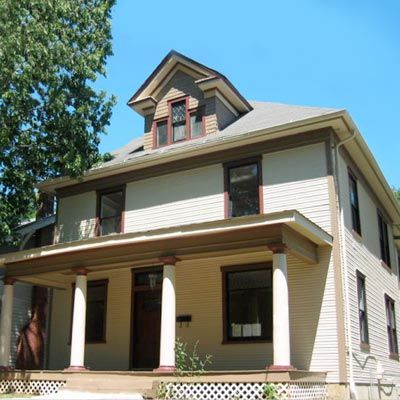
A few minutes’ drive southwest from downtown Roanoke, picturesque Mountain View is perfectly located in every respect: It’s a cinch of a commute and enjoys stunning panoramas of the Blue Ridge Mountains and the Roanoke River. It’s no wonder residents of this neighborhood spend so much time outdoors. Retirees and families enjoy soaking up the scenery along the area’s Roanoke River Greenway, a 5.5-mile paved path perfect for walking, running, and bicycling. When wintry weather moves in, the arty locals flock to the city’s galleries or mountainside wineries, or enroll in dance, music, and other “personal enrichment” classes at the Fishburn Mansion, a National Historic Landmark and community-life hub. Factor in the forty or so classic old homes—built between 1884 and 1924 to house an onslaught of railroad-industry execs—that line Mountain View’s streets, and you may just have the ultimate Roanoke Valley settling spot.
The Houses
The neighborhood’s housing stock consists predominantly of two-story American Foursquares, along with occasional Queen Annes and bungalows. A renovation movement is on the upswing, and prices and conditions run the gamut. If you’re low on cash and high on motivation, a two-story handyman special can be scored for about $35,000. Higher-end options run between $100,000 and $200,000, and are often fully renovated with preserved original details, such as pocket doors and ceramic tile.
Why Buy Here?
You’ll get a much-needed tax break. In an effort to keep Mountain View’s revitalization clipping along, preservation societies, such as the Virginia Landmarks Register, have secured significant tax exemptions for home buyers who restore historic structures—the more you sink in, the more you save.
Among the best for: The South, Bargains, Fixer-Uppers, Waterfront, Retirees, Family Friendly, Outdoor Activities, Easy Commute
Martinsburg, West Virginia
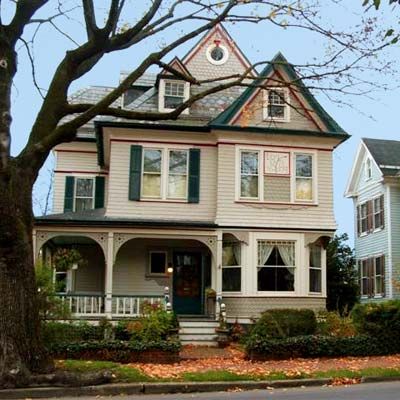
“You gave me one quarter too many,” Ed Trout beckons to a customer who’s hightailing it out of his King Street Coffee & Tobacco Emporium after buying a cup of joe. It’s a shining example of how people seem to look out for one another in Martinsburg, a city of 17,000 with decidedly small-town tendencies. Trout was born and raised in Martinsburg, where he spent his childhood hooking catfish and walleye on the nearby Potomac River. He went away for college, but came back in the early 1990s to open his store in one of Martinsburg’s historic downtown commercial buildings. Those storefronts also house Italian restaurants, mom-and-pop drug stores, and a full-fledged chocolate factory. Trout says his coffee-and-cigar shop is emblematic of Martinsburg’s convivial atmosphere. “It goes back to the old general store days,” he says, “where you’d show up each day, say hi to your friends—and just tell your stories.”
The Houses
Martinsburg is home to ten National Register Historic Districts, with every American house style imaginable—from Federal to Foursquare. More opulent houses are on King and Queen streets, where 19th-century industrialists who made their fortunes in the textiles mills built large Queen Anne, Georgian Revival, and Colonial Revival mansions. Prices for starter homes begin at less than $100K, but a restored four-bedroom Queen Anne with a huge yard for gardening can be had for $250,000.
Why Buy Here?
This self-proclaimed “Gateway to the Shenandoah Valley” has grown in popularity over the years, as commuters from Washington, D.C., and Baltimore move here for a relaxing change of pace (despite the two-hour journey). A new Macy’s distribution center, now under construction, will offer more than a thousand jobs.
Among the best for: The South, Bargains, Fixer-Uppers, Retirees, Singles, First-Time Buyers, Victorians, Small Towns, Gardening
Sheridan, Wyoming
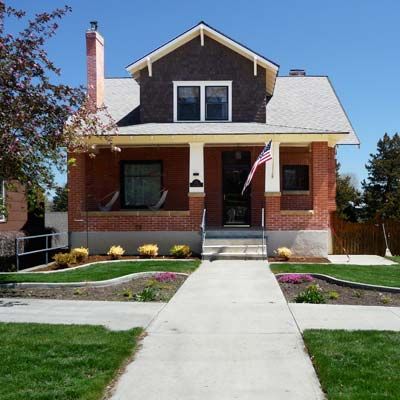
The preserved western storefronts of turn-of-the-century downtown Sheridan (population 17,461) are not for show. While it’s true that Buffalo Bill Cody auditioned acts for his Wild West Show on the landmark Sheridan Inn’s steps, today’s residents, from cowboys to doctors at the Veterans Administration hospital, buy socks at the old J.C. Penney, nails at Sheridan Commercial Company, and reins from King’s Saddlery. The family-owned tack shop, founded in 1961 and famous for its ropes and hand-tooled leather saddles, ships worldwide. “Sheridan is rural Americana at its finest,” says Andy Ayres, co-owner of Lulu’s Cafe, which offers meat and potatoes and tapas. But don’t confuse rural with hick: There are two polo clubs here that draw players from as far away as South America.
The Houses
Most historic homes are in Residence Hill, along South Main, which runs the town’s length, and blocks west. The predominant style is Craftsman, like the 1914 two-story that Rod Fordahl has been fixing up “forever.” When he bought the place 20 years ago, it contained the original claw-foot tub and panel doors. You’ll find the odd Tudor, Queen Anne, or Dutch Colonial; expect to pay from $275,000 for a 3,000-square-foot historic home. “Places have been preserved pretty well,” says Fordahl, whose company, Fry Construction, does remodeling jobs. Once he’s done with a place, and the coal-fired furnace has been replaced, the price might climb to $400,000.
Why Buy Here?
There are no incentives, per se, to fix up an old house in Sheridan, but property taxes are extremely low. You might pay $1,500 a year for a 3,000-square-foot house.
Among the best for: The West & Northwest, Fixer-Uppers, Retirees, Cottages & Bungalows, Small Towns, History Happened Here
Old San Juan, Puerto Rico
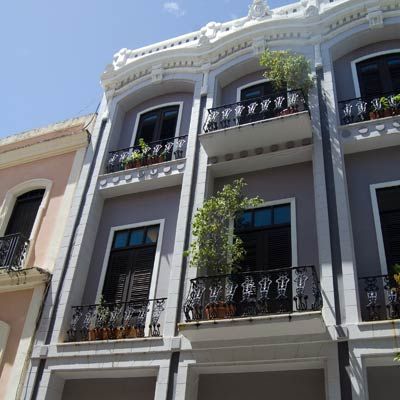
It’s said that you need to be either a poet or loco to live in Old San Juan, where Old World charm meets decidedly New World eclecticism. Packed into the winding streets of this fortified Caribbean peninsula are artists, students from three universities, shop owners, café culture knockabouts, lawyers, musicians, millionaires, government employees, and the gobierno himself, who lives in La Fortaleza; built in 1540, it’s the longest-occupied governor’s mansion in the Western Hemisphere. Neighbors chat over café con leche at places like La Bombonera every morning, and a walk on the blue-gray cobblestones, called adoquines, leads past impeccable, colorful Spanish Colonial rowhouses on par with those of Madrid.
The Houses
Restoring a Spanish Colonial, with its 2-foot-thick walls, brick-lined cisterns, and lead-pipe plumbing, is a long, involved process that is strictly overseen by the Instituto de Cultura Puertoriqueña. “They have a say inside and out, down to the hinges,” says Realtor Margarita Gandía, whose mother was one of San Juan’s first Realtors in the 1950s. A shell might go for $300,000. Homes requiring less than a gut-renovation can command $600,000. Finished, properties are worth $1 million or more.
Why Buy Here?
The upside to following strict preservation guidelines is that if the result passes inspection, you’ll pay nothing in property taxes. That status has to be renewed every 10 years, under inspection, which keeps the neighborhood in top form.
Among the best for: The South, Fixer-Uppers, College Towns, Waterfront, Retirees, City Living, Rowhouses, History Happened Here, Easy Commute, Walkability
Leslieville, Toronto, Ontario, Canada
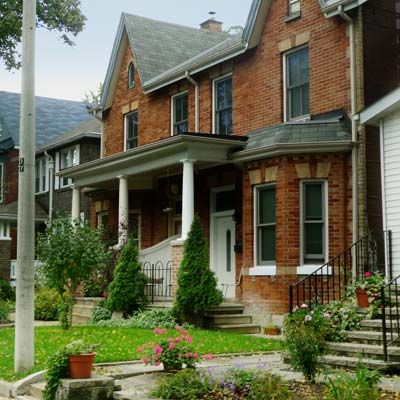
Once gritty and industrial, the east-end Toronto neighborhood of Leslieville (population: 27,000) has gained traction as families, artists, and business owners arrive in droves, lured by the fashionable scene, safe and walkable streets, proximity to local beaches, and—at least by pricey Toronto standards—affordable housing offered here. “Leslieville has completely changed in the past three years,” says Jasmin George, who works at the children’s boutique Baby on the Hip. Hers is one of many new businesses that have opened in Leslieville in recent years, including pubs, restaurants, markets, bakeries, and a cheese shop.
The Houses
“There’s definitely something enchanting about this place,” says David Dunkelman, a Realtor who runs TorontoNeighbourhoodGuide.com. Three-story Victorian-era rowhouses with steeply pitched gables line narrow, tree-bordered streets. Prices for two-story rowhouses and vernacular-style cottages start at $300,000 (USD).
Why Buy Here?
It’s one of a few desirable nabes near Toronto’s center where a reasonably priced home can be scored. Downtown is a swift 15 minutes by car or trolley, and the nearby Lake Ontario beaches can be reached via foot or bike.
Among the best for: , Victorians, Waterfront, City Living, Family Friendly, Singles, First-Time Buyers, Easy Commute, Walkability, Bargains, Fixer-Uppers, Rowhouses
Central Halifax, Halifax, Nova Scotia, Canada
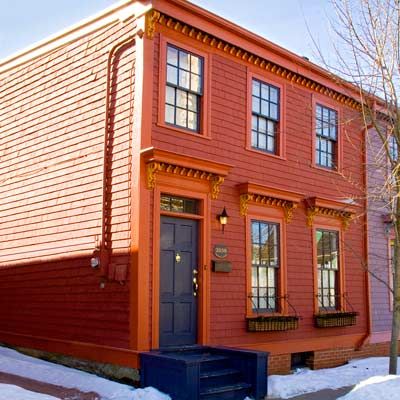
“You have to be a certain kind of person to live in Halifax,” says real-estate agent Pam Cherington. “The kind who’s concerned about quality of life.” A love of the water doesn’t hurt, either, since this so-called sleepy city of nearly 400,000 is surrounded by the stuff. Some of the most enviable old homes belong to residents of the Central Halifax neighborhood on the Halifax Peninsula, with its brightly painted townhouses and a five-minute walk to downtown and its restaurants, cafes, and brew pubs—all part of the appeal for the young professionals and growing families who move here. Halifax has a number of universities, too, so there’s a steady influx of young people, some of whom never leave.
The Houses
The draw here is the late-19th-century cedar-shingled townhouses, with high ceilings, original pine or Douglas fir millwork, and thick crown moldings. Some are two stories with flat roofs; others are two-and-a-half stories with pitched roofs and dormers. The houses, built by Nova Scotia’s sea captains, merchants, and businessmen, can be found in conditions from rundown to impeccably renovated, for prices from just north of $200,000 (USD) on up.
Why Buy Here?
The area declined during the 1980s and ’90s, but has spent the last decade as a destination for house flippers, who updated many a kitchen or bathroom. Those obsessed with attractive resale values, however, have mostly moved on, and those coming in are more likely looking to build a community and stay for the long haul.
Among the best for: Canada, Bargains, Fixer-Uppers, College Towns, Waterfront, Family Friendly, Singles, City Living, Easy Commute, Walkability, Rowhouses
Saint Andrews, New Brunswick, Canada

Hailed as the “Jewel in the Crown of New Brunswick,” this coastal village in the Bay of Fundy was one of Canada’s first pre-fab communities: British loyalists escaping persecution in the American colonies settled here in 1783, some transporting their dismantled homes for rebuilding. Late-1800s Canadian and American urbanites turned Saint Andrews into a summer playground, and the majestic Tudor-style Algonquin Hotel, built in 1889, stands today. Current residents find Saint Andrews a social place despite a high-season population of just 4,000: Locals tee off seaside, watch whales on the bay, and stroll the town’s three-mile walking loop. One thing you won’t spy here: big-box or chain stores. Local bylaws prohibit them, so Water Street’s shops are the 1880s originals.
The Houses
You’ll find Cape Cod–style cottages and other early homes put up by Saint Andrews’ first-wave settlers, and center-hall Georgians built in the 1830s. A meticulously restored 1770 Cape will set you back about $360,000; one needing TLC might list at $120,000. Big spenders: Note the $699,000 listing of New Brunswick’s most photographed home, a 1912 French Eclectic farmhouse with a harbor view and thatched-style roof and turret said to emulate explorer Jacques Cartier’s house in Brittany.
Why Buy Here?
Saint Andrews offers more house for your money compared with similar locales farther down the coast, says area real-estate agent Mark Gauley. That may be why it attracts American ex-pats and retirees looking to try out small-town living. It’s a 5-hour car ride to Boston—8 to Montreal—should you need a break from the daily waxing and waning of the 28-foot tides. We expect you won’t.
Among the best for: Canada, Bargains, Fixer-Uppers, Waterfront, Retirees, Small Towns, Outdoor Activities, Walkability
The West Broadway Neighborhood, Winnipeg, Manitoba, Canada
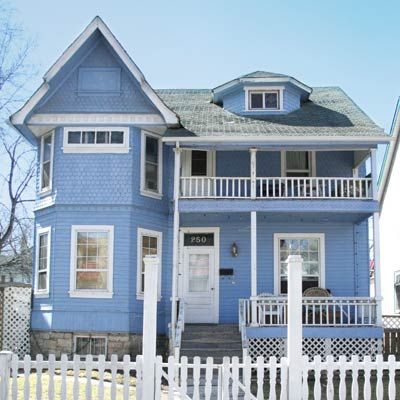
Aside from born-and-bred Winnipeggers, the residents of West Broadway include folks of West African, Middle Eastern, and Eastern European descent. The neighborhood is also popular among artists and art students, many of whom volunteer or take classes at Art City, a nonprofit that offers photography, sculpture, and other classes to West Broadway residents throughout the year. This is a friendly, eco-minded neighborhood, where public gardens and composting drop-offs are par for the course. A popular meet-up spot is Stella’s Café & Bakery, a beloved local chain that opened here two years ago. “When Stella’s moved in, it kind of legitimized this area,” says Drew Perry, an instructor at local Yoga North. “It’s definitely turned the corner.”
The Houses
This densely packed neighborhood—5,200 residents in less than a square mile—dates to the late 1800s. In the years around the turn of the century, merchants and transportation magnates built fabulous homes along Balmoral and Spence streets. Much of the area’s character stems from 208 two-and-a-half-story Queen Annes, stucco Foursquares, and Tudors, which list from $180,000. With luck, you may find 12-foot ceilings, maple and oak floors and moldings, and massive double-pocket doors with etched glass panels inside.
Why Buy Here?
“It’s going to be the trendy new neighborhood,” says Brian Grant of the West Broadway Development Corporation. This organization puts its money where its mouth is, having helped the area score some $16.5 million in government aid for both public and private projects in the past 10 years. Now’s a good time to get in and claim your share of the pie.
Among the best for: Canada, Bargains, Fixer-Uppers, College Towns, Family Friendly, Singles, City Living, Victorians, First-Time Buyers, Gardening, Easy Commute, Walkability
St. John’s, Newfoundland and Labrador, Canada
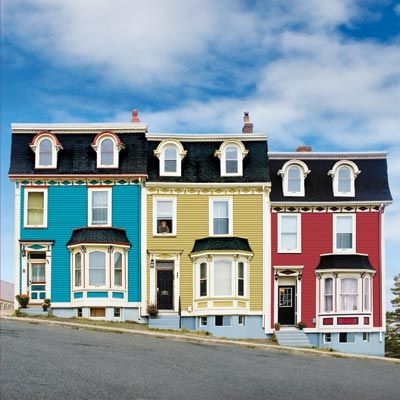
Newfoundland stands apart from Canada, an island with its own time zone, dictionary of idiomatic English, and buoyant cultural pride. The downtown district of capitol city St. John’s, built in a geographical bowl on a protected harbor, is a knot of steep streets where a local politician might live next door to a scruffy musician gigging at the Duke of Duckworth pub. Civic-minded residents boast that downtown St. John’s postal code comprises more artists per capita than any other in Canada, and the Newfoundland narrative looms large in the form of a massive gallery, archive, and cultural center called The Rooms that overlooks the area.
The Houses
“We love our ‘jelly bean’ houses,” says Dale Jarvis of the Heritage Foundation of Newfoundland and Labrador, referring to rows of three-story Second Empire rowhouses downtown. These structures hew to a remarkably consistent style, all built in the wake of an 1892 fire that burned St. John’s to a nub. Uphill, a smattering of Queen Annes and bungalows reside, perched there by merchants hoping to avoid future blazes. Thanks to offshore oil drilling in the last decade, St. John’s dodged the housing bust, but rowhouses with room for improvement can still be had for $250,000; freestanding homes list in the $500,000 range.
Why Buy Here?
You haven’t had this much fun with color since Crayola came into your life. Local company Templeton Paints has introduced a line of historic Newfoundland hues; the jelly-bean colors, embraced by owners of the downtown rowhouses, are eye candy—and instant motivation to put your paintin’ clothes on.
Among the best for: Canada, Fixer-Uppers, Waterfront, Retirees, Family Friendly, Singles, City Living, Victorians, Rowhouses, Easy Commute, Walkability
The London Road Neighborhood, Lethbridge, Alberta, Canada
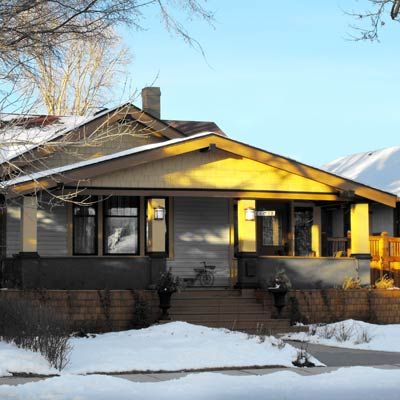
Back in the 1980s, Shell Oil announced plans to demolish a century-old Edwardian-era house in the London Road neighborhood and build a gas station in its place. In response, the London Road Neighbourhood Association immediately circulated a petition, quickly acquiring enough signatures to thwart Shell’s plan. Preservation: 1, Big Oil: 0. Now that the battle’s been won, residents of this 45-square-block neighborhood, rife with old houses and beautiful gardens, can relax in its three parks, which include playgrounds, tennis courts, and horseshoe pits. London Road is just minutes south of downtown, so theatrical performances at the Yates Memorial Centre or local hockey games at Enmax Centre are just steps away.
The Houses
The neighborhood has some of the city’s oldest Queen Anne, Georgian, and Craftsman houses. Starting around $215,000 (USD), you can get a 1,400-square-foot, 1½-story, 1908 bungalow with room for improvement.
Why Buy Here?
With the help of a powerful neighborhood association, residents continue to support the preservation of London Road’s historic homes. Real-estate agents note a steady increase in the value of restored homes here, so sinking cash into a fixer-upper can pay handsomely when the renovation is complete.
Among the best for: Canada, Bargains, Fixer-Uppers, Victorians, Family Friendly, Gardening, Walkability
Old Town, Yellowknife, Northwest Territories, Canada
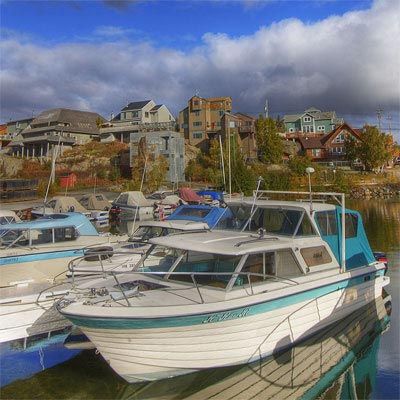
Tourists flock to Yellowknife each winter to witness the northern lights—and occasionally strip to their underwear to see if they can endure the city’s minus-40 F temperatures. “It’s adventure tourism to them,” says Elijah Forget, a lifelong resident. Despite the harsh winters, some visitors stay for the long haul. “It’s a breath of fresh air,” says Forget. “You’re so far away from urban centers and highways.” Indeed, this remote city of 20,000 between a forest and the 600-mile long Great Slave Lake is about 300 miles south of the Arctic Circle. But historic Old Town, a 1940s waterfront neighborhood established when gold rushers mobbed Yellowknife’s mines, offers companionship. Come summer, locals gather at the Wildcat Cafe to feast on daily fish specials before heading to the marina to fetch their boats for a lazy day on the lake.
The Houses
Some of Old Town’s houses were built by no-nonsense miners, who used local timber to build stout but sturdy log cabins. Many of those remaining have been clad in vinyl or clapboard siding. Prices range from $250,000 (USD) for a major fixer-upper up to $700,000 for a house that’s been renovated with additions and modern amenities. Old Town also has a well-established houseboat community.
Why Buy Here?
The last gold mine shut down a decade ago, but Yellowknife’s economy has found new life in diamond mines. This is the capital of the Northwest Territories, so there are government jobs here, too. Yellowknife has one of the highest family income rates, and lowest unemployment rates, in Canada.
Among the best for: Canada, Fixer-Uppers, Waterfront, Outdoor Activities